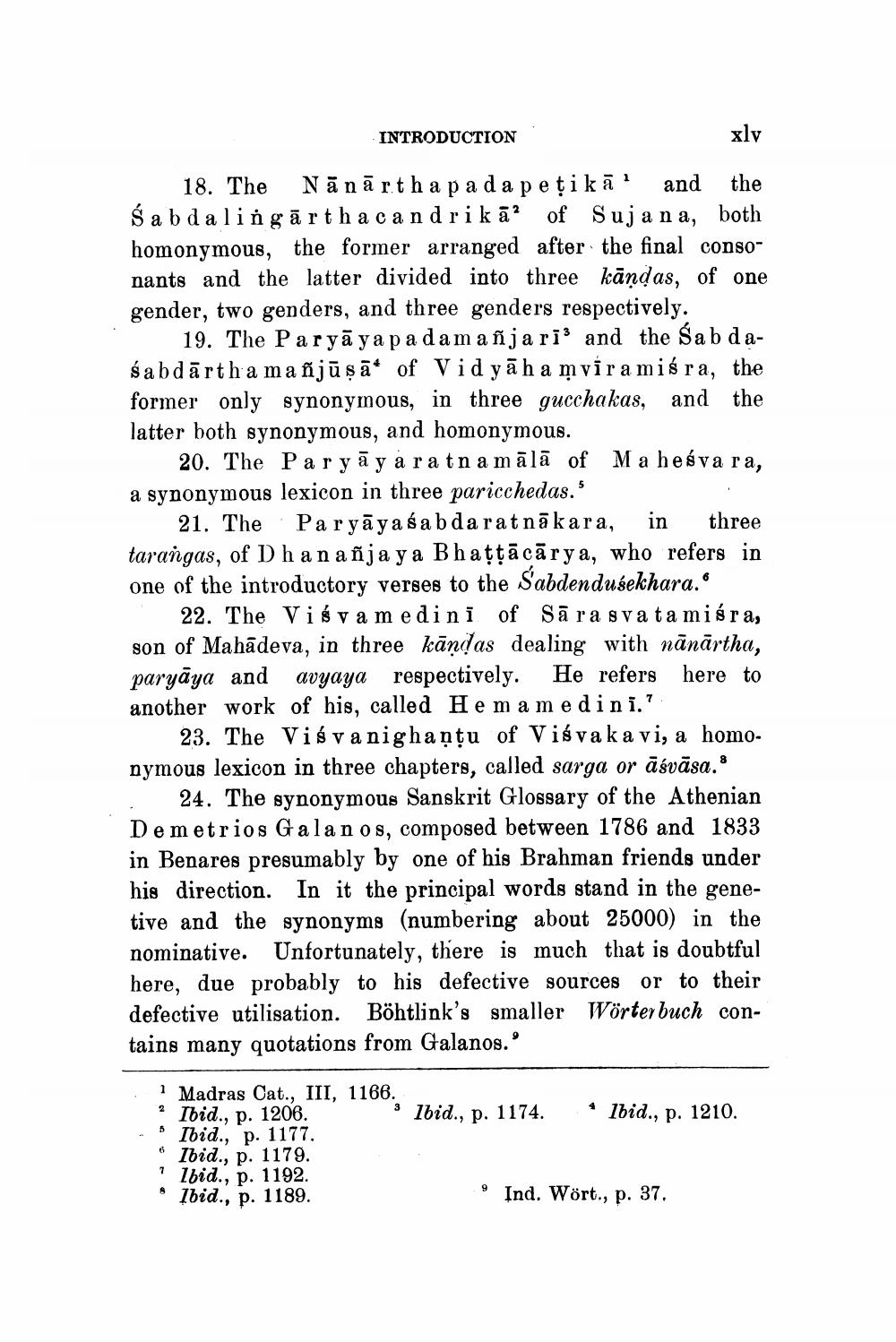________________
xlv
and the
Nanartha pada peṭikā1 Sabdalingarthacandrika' of Sujana, both homonymous, the former arranged after the final consonants and the latter divided into three kandas, of one gender, two genders, and three genders respectively.
19. The Paryayapadamañjarī and the Sabdasabdartha mañjuṣa of Vidyahamviramiśra, the former only synonymous, in three gucchakas, and the latter both synonymous, and homonymous.
18. The
20. The Paryayaratna mala of Ma heśva ra, a synonymous lexicon in three paricchedas."
in three
21. The Paryayasabda ratnākara, tarangas, of Dhananjaya Bhatṭṭācārya, who refers in one of the introductory verses to the Sabdendusekhara.
INTRODUCTION
22. The Viśvam edini of Sarasvatamiśra, son of Mahadeva, in three kändas dealing with nānārtha, paryaya and avyaya respectively. He refers here to another work of his, called Hema medini."
23. The Viśvanighanțu of Viśvaka vi, a homonymous lexicon in three chapters, called sarga or āśvāsa.
24. The synonymous Sanskrit Glossary of the Athenian Demetrios Galanos, composed between 1786 and 1833 in Benares presumably by one of his Brahman friends under his direction. In it the principal words stand in the genetive and the synonyms (numbering about 25000) in the nominative. Unfortunately, there is much that is doubtful here, due probably to his defective sources or to their defective utilisation. Böhtlink's smaller Wörterbuch contains many quotations from Galanos."
5
1 Madras Cat., III, 1166.
Ibid., p. 1206.
Ibid., p. 1177.
6
Ibid., p. 1179.
1 Ibid., p. 1192.
Ibid., p. 1189.
3
Ibid., p. 1174.
9
* Ibid., p. 1210.
Ind. Wört., p. 37.




